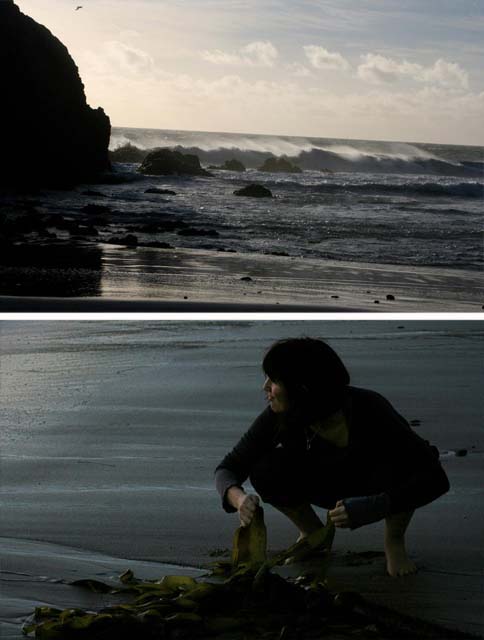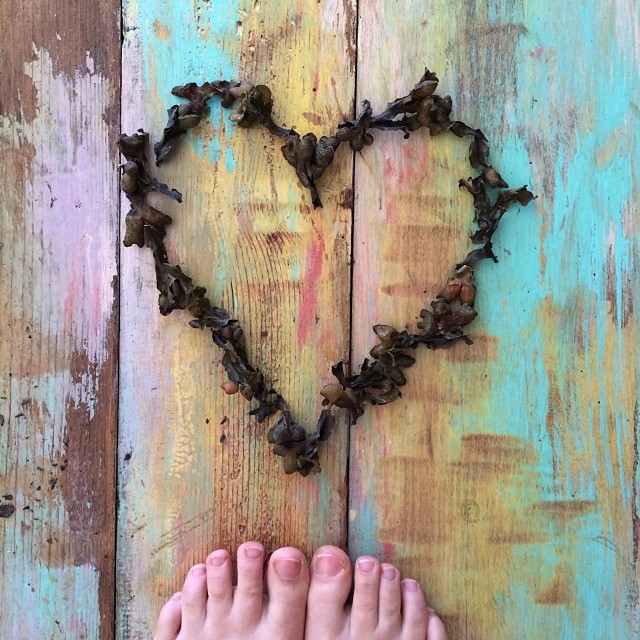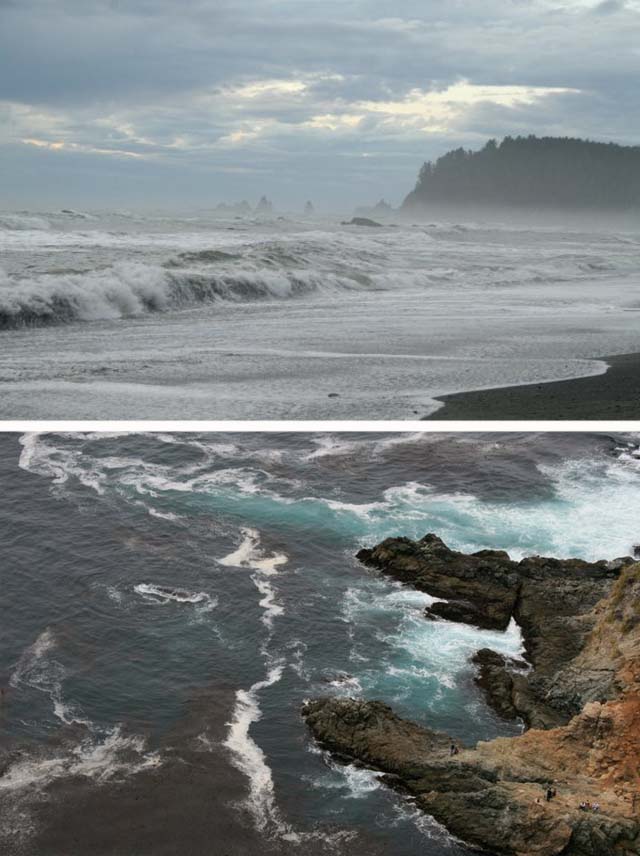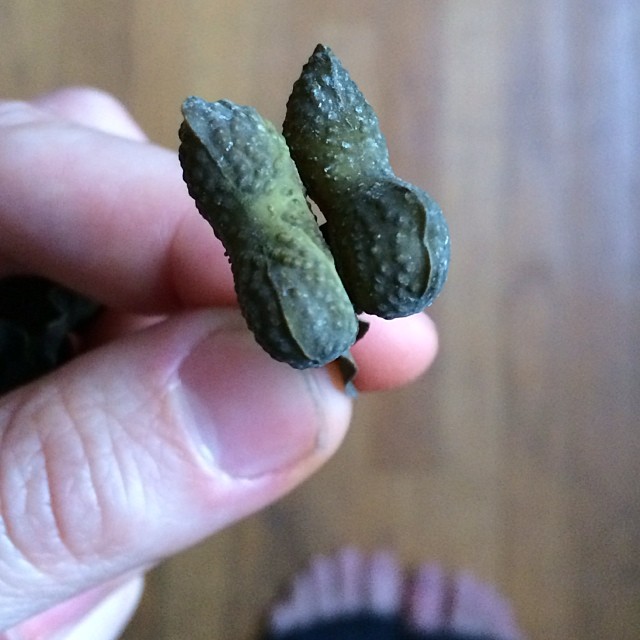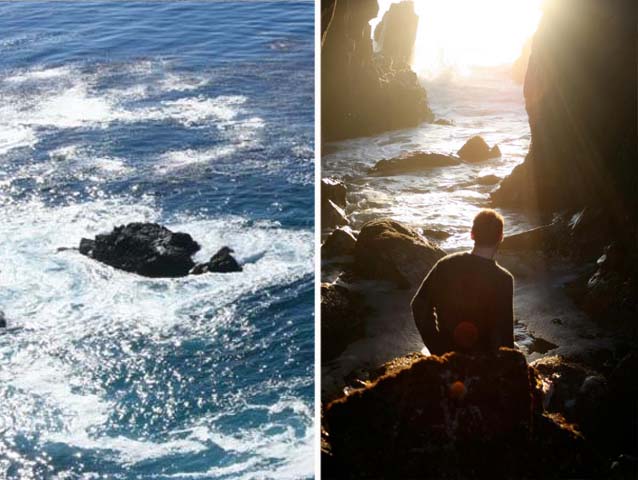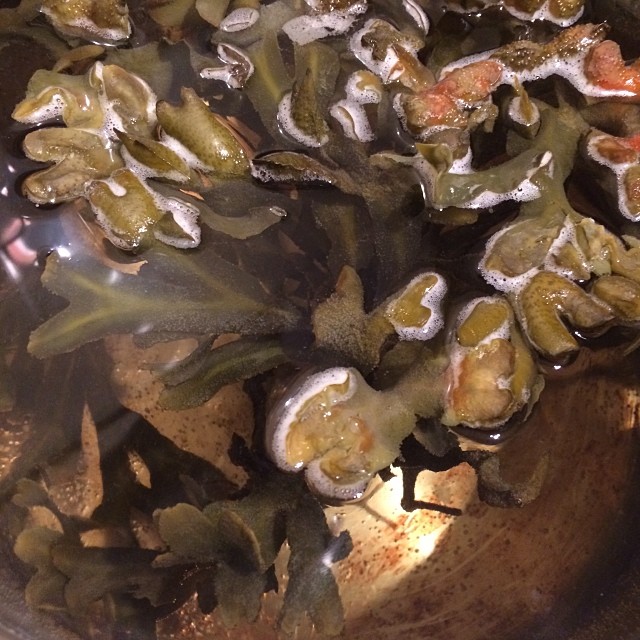To the lonely seas and the sky
(on murky depths and surrender)
We watched him row out from the shore as the sun was setting. He rowed steadily, firmly, like someone who had been doing it for years. He jumped aboard his trimaran, which was moored next to our boat, and we called hello and chatted back and forth across the water. He’d built the boat himself. It was fast, with a max speed of 30 knots, and he has sailed it alone across the Atlantic seven times. When he found the cove we were anchored in, he liked it so much that he set up a mooring and stayed there. He himself looked like the archetypal image of an old sea man: white beard, tanned skin and sinew. He gazed out over the sea as we talked, as if casting stabilising lines into the deep. I thought to myself: This is a man rooted in the sea, which spends all its time moving. This is a man who has made his peace with uncertainty.
Summer holidays when I was little involved stays in rented cottages teetering on the edge of the land along the west coast of Scotland. At the time, I regretted that we weren’t at Disney World, like most of my classmates, who would return for the school year with tans and new clothes and stories about all the cool stuff they’d seen in America. No, we went to Oban, or to Inverness to visit friends. We went to the isle of Staffa to explore the giant’s causeway or have picnics on the cliff overlooking the stormy grey sea. Fingers and noses pink with cold, we took a boat out to see the whirlpool in the gulf or Corryvrechan. The churning of the seas (which can be heard for 20 miles) in the gulf was said to be where the Cailleach Bheur did her washing in the autumn, and was what ushered in the winter every year. Its only as an adult, looking back, that I realise how much these summer holidays affected me— so much more than a trip to Disney World ever could. The stormy seas and rocky cliffs and the stories about them got under my skin, and into my veins and many times throughout the week I find myself gazing into the distance staring not at what is there but out over the churning sea as if it were right in front of me.
I was once given a book of Scottish folk tales and I remember quite clearly that they all scared the crap out of me. Most folk tales are warnings, usually having to do with crossing boundaries, trusting handsome strangers and going near the water. There are no benevolent sea creatures in myth, and if you’ve been to the Scottish coast, you can probably understand why: its cold, its stormy, the wet seeps under your skin and into your bones. Currents are strong and waves appear from nowhere. Depths are both murky and unfathomable. These stories were probably passed on to deter children from running into the sea and being snatched away by the waves because children are drawn to the water like most people are drawn to the water: irresistably.
I recently read ‘The Wave’, by Susan Casey: a brilliant treatise on tsunamis, rogue waves, big wave surfers, and wave science all interconnected in one interesting and well written web. One of the things that struck me through the course of the book was that there are plenty of people who want to classify, capture, understand the sea, but very few who do. The science of waves is constantly changing because there are factors that scientists cannot grasp. Rogue waves happen but we aren’t entirely sure why, though we have a constant stream of ideas. They cannot be predicted. Nor can they be stopped. Numbers, restrictions, charts, classifications and formulae are always outsmarted. Water, it seems, is tricky.
It got me thinking about masculine and feminine principles. Not male and female, mind, as sex or gender, but the basic principles that make up the structure of the universe. We can call them ‘yin’ and ‘yang’ or light and dark, definable and undefinable, or solid and unsolid. Mapped, unmapped; known, unknown; tame, wild. The 'feminine' side of things, the unknown dark places: we all have them, and the more we try to grasp them the harder it is to hold on to them.
In ‘The Wave’, those who seemed to have a deep understanding of the sea and the ways of the water were those who revelled in its mysteries: the surfers who rode it without trying to control it, followed it where it would take them and surrendered themselves to its mercy. The sailors that I know have a similar understanding of the world; one that comes from the bone-deep knowledge that one is very very small indeed. In trying to classify, capture, hold on, you might understand one wave, but will never understand the bigger picture: waves don’t exist in isolation because nothing exists in isolation. The realisation that each wave is connected to another, and that none can actually be predicted is pretty damn disconcerting. Thus lies the feminine principle— something that cannot be fathomed with the rational brain, cannot be held onto, cannot be classified and most definitely cannot be predicted. More than that, in this logic-worshipping world, it is dangerous and yet we are irresistibly attracted to it. It is the source of life and yet we pollute it; we’re pulled towards it as it terrifies us.
Life, to me, is mainly about opposite forces coexisting in the same space (this being a binary universe, and all): light and dark and the play of shadows across landscapes; tension and flexibility and all the combinations of the two; power, or the confidence that comes with great ability, and the understanding that comes at some point that no matter how skilled you are, you are still small. Humility, and sense of purpose. Holding on, and letting go. Doing what you can, and at the same time surrendering oneself to the constant movement that is life.
Sea things have to deal with this constantly, clinging on but letting go: you can’t be rigid if you are a sea plant, or try to direct things. Its got me thinking more about the fluidity of waves and how the only way to truly experience the constant movement of the sea is to let go and not try to hold onto it. Surrender. How to accept the mystery of the unknown, which is so easily represented in the depths and yet exists in all of us. Lately I’ve been immersing myself in sea poetry, sea myths and sea plants for inspiration for the Salt + Water Surprise Box (which is a box of sea salt and seaweed treats, born of this exploration). As a part of this immersion, I’ve been taking seaweed baths. Actually they’re sea salt and seaweed baths, and I warn you they make you smell like I imagine a Kelpie smells— that is, of seaweed. Regardless of whether you want to mind-meld with the sea or not (something, for the record, I highly recommend), they are full of minerals, relaxing, slightly pain-relieving, and slimy. This slime is excellent for your skin, moistening it and making it silky and smooth. And while I don’t necessarily want your company in *my* bath, if you’d like to join me from over there where you are, diving into the mysteries of the deep and surrendering a bit to the unknown, then here’s my favourite way to do it:
Sea-immersion bath.
2 cups dried bladderwrack
1 cup dried other seaweed (I use kelp)
4 cups sea salt
1 cloth sack of some kind (a clean sock that belongs to someone with very big feet works well)
Fill the biggest pot you have 7/8 of the way with water, then set on the stove on high heat. Throw all the seaweed into the sock/ sack/ muslin tied together, and put this in the water. Bring to a boil, then reduce the heat and let it simmer for 20 minutes to half an hour, stirring occasionally. After this, just pour the whole thing into the bath. You can keep the cloth sack in the bath (it’ll be slimy and great for squeezing, rubbing over skin, etc). Add the sea salt to the bath, light some candles, and get in.

